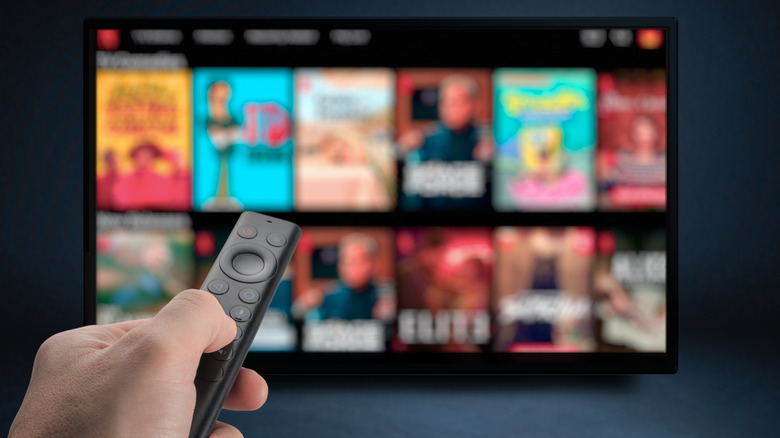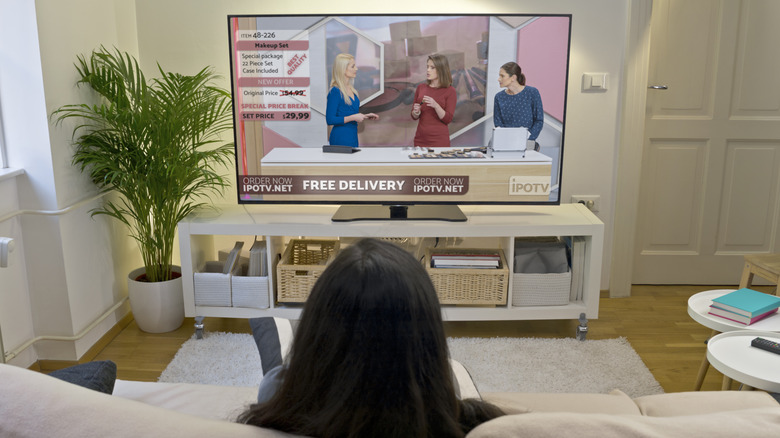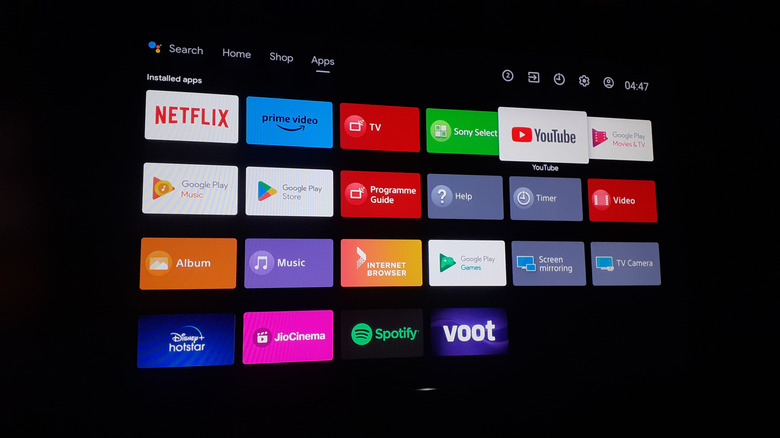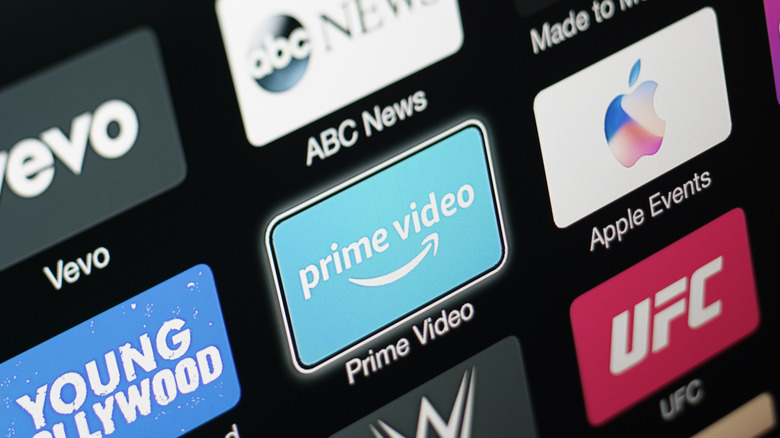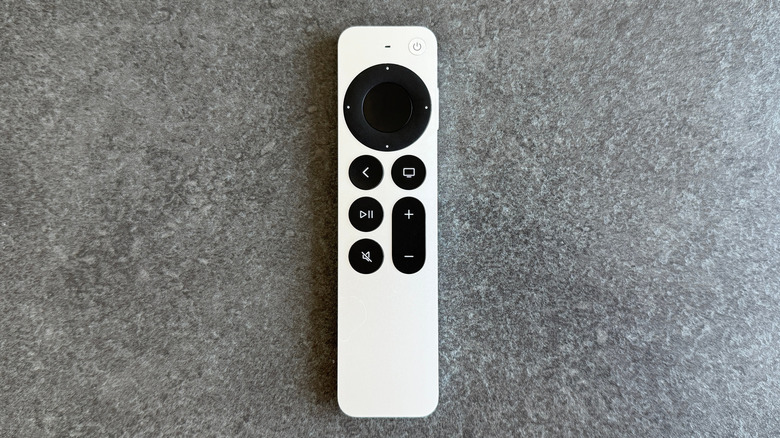5 Benefits Of Using A Streaming Device Even If You Have A Smart TV
When everything is getting more expensive, from the Nintendo Switch 2 to the new Samsung Galaxy Z Flip7 and Fold7, one item in the tech industry has always remained remarkably, and almost magically, cheap: the television. Our list of the best budget-friendly TVs under $500 includes 4K panels with HDR and other goodies despite the sub-$500 price ceiling, so even going cheap won't leave you wanting. On top of vivid OLED panels with high refresh rates, it's now common for smart TVs to feature a built-in operating system that functions similarly to a Roku, Chromecast, or Apple TV streaming device. A new TV these days is, in theory, ready to go out of the box, and it may seem like there's no reason to spend extra on a streaming device to go with it. Except, we'd argue you have all the reason in the world to get one of the best streaming devices for your TV.
If streaming devices were inferior to smart TV operating systems, we'd expect to see the streaming device market on the out. And yet, giants like Google recently came out with the Google TV Streamer, and Apple is rumored to release a new Apple TV in 2025. Some televisions, like the best Roku TVs of 2025, bake a streaming box into the hardware. If you're struggling to see a reason to justify the cost, here are our five benefits of a streaming device on a smart TV.
Less ads (or no ads at all)
It wasn't bad enough, apparently, for Netflix's basic ad-free plan to die off. Smart TV manufacturers took the hint and followed suit. Ads have been appearing on Samsung Smart TVs since 2016, and video ads on Amazon Fire TV are now standard fare. Even premium smart TV models may have ads, and some will shove them in your face even when you're not using your TV. Don't fool yourself into thinking consumer ire will change this situation. All the evidence points to smart TV manufacturers embracing a profit model centered on unwanted ads. Enter streaming devices.
Since your streaming device connects via HDMI and therefore bypasses the smart TV's OS almost entirely, you'll only get ads if the device itself supports them. There are ads on some streaming devices in some situations. Roku, unfortunately, has been pushing the envelope to see what it can get away with. Some ads are app-specific, such as ads on Google TV. However, it seems there are fewer ads on streaming devices than smart TVs.
We recommend getting an Apple TV if you can, since it's the one streaming device known to be ad-free. I've used it so long on my panel, ad-free, that it's easy for me to remain blissfully unaware that so many others have advertisers' five fingers deep in their TVs. If you don't like Apple, you can turn a Raspberry Pi into a smart TV streaming device. You can also block ads by adding ad domains to your router's firewall or installing a Pi-hole device that blocks ads network-wide.
Better hardware, UI, and features
You'd think that in exchange for lifelong ads and your smart TV spying on you, TV manufacturers would at least make their software a joy to use. But nope. A common complaint about smart TVs is that the built-in OS, frankly, sucks. TV OSes tend to be buggy, slow, or unintuitive. Though frustrating, it's somewhat understandable. Manufacturers have to keep costs low when margins are slim, and OS development costs money. Streaming devices don't have this problem.
It only makes sense that good software is the first selling point for a software-first device meant to replace your TV's OS. Reviews generally praise the software experience of a streaming device. I certainly do, for my Apple TV. There are generally more features and functionality, too. For example, the Apple TV can use your smart TV as a screen for a FaceTime call with the iPhone as a camera, act as a smart home hub to control your lights away from home, or work as a mirrored screen for your MacBook. Plus, streaming devices tend to get longer-term software updates and whatever new features come with them, possibly outliving your TV. Since you choose the streaming device, you can choose whichever OS best suits your taste and needs — whether or not the TV's OS is up to the task.
Streaming devices bring all the necessary hardware for the job, which is why, anecdotally, they feel snappier and faster than your TV's OS. Just to give an example, the Apple TV 4K is powered by the A15 Bionic chip, also found in an iPhone 13. Many of them can play games with that extra brunt.
More app variety
We mentioned that one of the big benefits of a streaming device is not being stuck with whatever the smart TV manufacturer gives you. There's greater choice, and that choice extends to what software is available. Finding the app for the big streaming services (Netflix, HBO, the works) usually won't cause an issue, but you might need workarounds to get others. Often, the limited app selection excludes a lesser-known streaming service. Streaming devices are effectively smartphones that connect to your television, so they support a much wider variety of apps.
For example, you might have trouble finding the best VPN services on a budget smart TV, but not on a streaming device. You'll also get a wider selection of apps for more use cases — file explorers, speed test apps, and video game streaming, to name a few. Since smart TVs are obviously oriented towards streaming services, they miss out on the more robust app stores of Google, Apple, and Amazon. The biggest streaming device makers like Google and Apple naturally incorporate more ecosystem benefits into their devices, too. The Google TV streamer, for example, includes Google's Gemini and Google Home settings.
Another frustrating (yet common) story is that older TVs stop getting updates, even for the few apps they support. If your panel stops receiving updates for Netflix, that's it. Game over, no more Netflix. However, you can upgrade almost any TV with a streaming device that still gets Netflix updates. Streaming devices give older TVs a longer lease on life, rather than forcing you to upgrade unnecessarily. Spending $69.99 on the Roku Streaming Stick 4K Plus is undoubtedly cheaper than buying a new TV.
Traveling with your media is easier
Entertainment while traveling (assuming you're not using your phone) can be hit or miss. You're either stuck with whatever your hotel or Airbnb has to watch, or you make the sketchy decision to put your Netflix password into some random device. Recent developments, like being able to use AirPlay at some hotels, prove the situation is changing — but not fast enough. So get a dongle/stick streaming device. You can make almost any TV, anywhere, your favorite streaming platform. If you'd rather not put any more money in Jeff Bezos' pocket, there are plenty of Fire TV stick alternatives worth checking out.
All a TV needs is an HDMI port to become your entertainment suite. The only tricky part may be finding somewhere to plug your power supply into; we all know how hard it is to find more than a couple of wall outlets at a hotel. That's when a good power bank comes in handy. It may also be tricky to figure out how to change the inputs on a hotel TV via the remote or buttons. If you can't get the input to change, try replacing the active device with your streaming stick.
Perhaps the most challenging part of this whole process is connecting your streaming stick to hotel Wi-Fi — both because of the scourge that is captive portals, and because hotel Wi-Fi speeds have never been known for, well, speed. You may need to use mobile data during your trip to create a hotspot for your streaming stick. Hotspots are a more secure form of Wi-Fi than connecting to whatever random free network is available, at least.
A better remote
We can probably all agree that most TV remotes are awful. They seem like they were designed by someone with no knowledge of user interfaces, tasked with cramming as many buttons as they could into one rectangle. It's no wonder that when we run into a new remote, we feel like we're flipping breaker box switches, waiting for the desired effect. While it's understandable that the TV manufacturer wants you to control all its functions from a single place, the joy of streaming devices is their simpler, streamlined, and — frankly — better-designed remotes.
To give a concrete example, take the Apple TV remote. It's compact, and limits things to a power button, an intuitive touch circle with arrow buttons, volume control, play/pause, mute, and a back and home button. That's it. No unwanted streaming service-specific buttons, no confusing buttons for that one niche function you never use. Since an Apple TV remote (and most streaming remotes) can control your TV directly, it becomes the remote for everything except TV settings.
From personal experience, streaming devices change the game. Aside from being an amazing remote that just gets the job done, it lets me control my TV by feel and muscle memory, rather than looking at it every time I press a button. Plus, it includes other goodies you wouldn't expect in most remotes; the Apple TV remote charges with USB-C instead of requiring batteries, and the side button accesses Siri to control your smart home and search for movies. There's an ecosystem benefit here too, like how you can use your iPhone, iPad, or Apple Watch as a TV remote, but you get the point.
